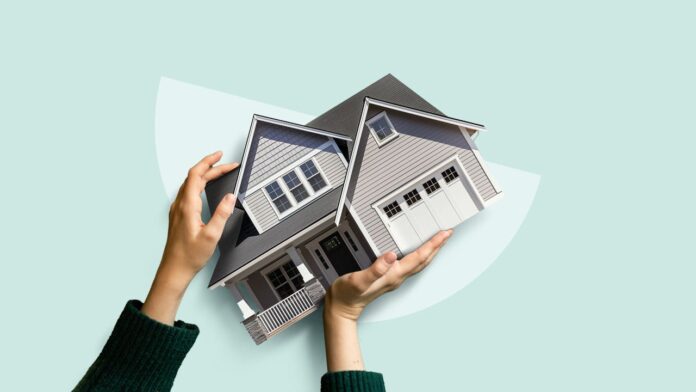San Francisco’s real estate market is notoriously expensive, but it’s not impossible to find a home that fits your budget.
Buying a house in one of the most competitive markets in the U.S. requires a strategy, a firm understanding of local trends, and the ability to spot opportunities that others might miss. The goal is to avoid overpaying, and with careful planning, you can make it happen.
Key Points:
- Set a realistic budget based on market conditions.
- Work with a trusted real estate agent.
- Know your financing options.
- Focus on upcoming neighborhoods.
- Stay patient and flexible.
Work With a Trusted San Francisco Realtor

In any real estate market, having an experienced realtor on your side makes a big difference. In San Francisco, this is crucial. A local realtor knows the intricacies of the neighborhoods, can help identify overpriced listings, and will provide insights into where the best deals might be found.
For example, working with a San Francisco realtor like Nona Ehyaei, offers a unique advantage. Nona’s background in working with tech executives, venture capitalists, and her deep knowledge of the Bay Area gives her a well-rounded perspective.
This kind of experience helps buyers secure homes at a fair price without getting caught up in bidding wars or paying too much.
Set a Realistic Budget
Start by examining your finances and decide how much you can afford without stretching yourself too thin. Mortgage lenders generally suggest that your monthly payment should not exceed 28% of your gross income. Factor in property taxes, home insurance, and potential maintenance costs.
San Francisco’s median home prices can feel daunting, but your realtor can help you find areas that might offer more affordable options without compromising on quality. Keep your budget realistic to avoid unnecessary debt later.
Explore Upcoming Neighborhoods
Many people focus on the city’s established neighborhoods. However, there are hidden gems in upcoming areas where prices may still be manageable. Knowing where development projects are underway or where public transportation plans to expand can help you spot long-term value.
Neighborhoods like Bayview and Excelsior are examples of areas where housing prices have historically been lower, but they’re showing signs of growth. Exploring such neighborhoods with a local expert could lead to better deals while still offering access to the city’s amenities.
Financing Options Matter

Besides the standard 30-year fixed mortgage, there are also adjustable-rate mortgages (ARMs), FHA loans, and VA loans available. ARMs, in particular, might offer lower initial interest rates, making them attractive in high-cost markets.
It’s essential to understand the pros and cons of each type of loan. A good mortgage broker will help you find the best loan product for your situation, whether you’re looking for lower monthly payments or a smaller down payment.
Table: Common Mortgage Types
| Loan Type | Key Features |
| Fixed-Rate Mortgage | Stable payments over the loan term, typically 15 to 30 years. |
| Adjustable-Rate Mortgage | Lower initial rates, but they adjust after a set period. |
| FHA Loan | Lower down payment options, available to first-time homebuyers. |
| VA Loan | No down payment, available to veterans and active-duty service members. |
Get Pre-Approved for a Mortgage
Pre-approval gives you a clear idea of what you can afford and strengthens your offer when bidding on a home. Sellers are more likely to take an offer seriously when the buyer has secured financing. It also speeds up the closing process.
When securing pre-approval, make sure to shop around with different lenders to find the best rate. Interest rates can vary, and even a small difference can add up over the life of a loan.
Personal Experience: Finding a Home in a Competitive Market
A few years ago, I helped a friend buy her first home in San Francisco. At first, she was overwhelmed by the high prices, and every house she liked seemed to go into bidding wars. But instead of rushing into anything, we took a step back.
We decided to focus on a lesser-known neighborhood that didn’t seem trendy at the time, but it had all the right elements: proximity to transit, ongoing development, and solid schools.
With the help of her realtor, she made a strong but reasonable offer on a house. It wasn’t her first choice initially, but now, after a few years, the neighborhood has transformed, and her property has appreciated significantly. The key was patience and strategic thinking.
Avoid Bidding Wars

San Francisco’s market is known for its intense bidding wars. One way to avoid overpaying is to steer clear of homes that are likely to attract multiple offers. Homes priced below market value tend to generate the most attention. Instead, focus on properties that have been on the market for a while.
A home that’s been listed for more than 30 days often indicates the seller might be willing to negotiate. Your realtor can help you identify homes that are less likely to spark a bidding frenzy but still offer good value.
Negotiate With Confidence
Once you find the right home, it’s time to negotiate. Remember that the initial asking price is often negotiable. With the right realtor, you can analyze comparable homes in the area and determine a fair offer. Presenting your offer with confidence can sometimes make the seller more willing to accept.
It’s also helpful to include terms in your offer that might appeal to the seller, such as a flexible closing date or a willingness to waive certain contingencies. Knowing when to push and when to ease off can be a fine line, but experienced realtors excel at finding that balance.
Inspections and Due Diligence
Never skip inspections. Even in a competitive market like San Francisco, it’s vital to know exactly what you’re buying. San Francisco homes can have unique issues, including seismic vulnerabilities, plumbing, or foundational problems.
A thorough inspection ensures that you know any potential issues before closing. If the inspection reveals significant problems, you can either negotiate for repairs or use that information to adjust your offer.
Be Patient and Flexible

Buying a home in San Francisco may take time, but staying patient is essential. Many buyers give up too quickly or settle for homes that don’t meet their needs because they feel pressured. Remain open to different options and understand that sometimes the perfect home takes a while to find.
Flexibility also helps in a competitive market. If you can be open to different neighborhoods or types of homes, you increase your chances of finding a deal. Don’t get too attached to a single listing. Keep your long-term goals in mind and trust the process.
Closing the Deal
Once you’ve found your home and negotiated the terms, the final step is closing. Ensure all paperwork is thoroughly reviewed, and don’t hesitate to ask questions if something doesn’t make sense. Make sure your financing is in order and prepare for the closing costs, which can be significant in San Francisco.
On average, buyers can expect to pay around 2-5% of the home’s purchase price in closing costs, including loan fees, title insurance, and property taxes. Have funds ready to cover these expenses.
Final Thoughts
Buying a home in San Francisco without overpaying is possible with the right approach. Work with a knowledgeable realtor, explore all your financing options, and stay patient. By focusing on upcoming neighborhoods and avoiding bidding wars, you increase your chances of finding a great deal in one of the country’s most competitive markets.









